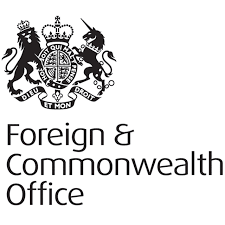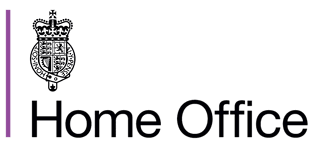PRESS RELEASE : Only highest-quality vocational qualifications to count post-16 [November 2012]
The press release issued by the Department for Education on 20 November 2012.
Only the highest-quality vocational qualifications will continue to count in reformed performance tables for colleges and school sixth forms, Education Minister Matthew Hancock announced today (20 November 2012).
He said that the move would ensure that post-16 institutions focused on valued qualifications that make it easier for young people to get good jobs or go on to higher education.
The proportion of 16- to 18-year-olds (studying at level 3) now taking at least one of the 4,000 post-16 level 3 vocational courses available (BTECs, City and Guilds, NVQs and so on) has risen from 31 per cent in 2008 to 45 per cent in 2011 – from 104,000 students to more than 167,000.
All these 4,000 courses count in the current performance tables. But the degree of rigour and stretch in these varies considerably and most rely heavily on internal assessment, like coursework, rather than externally marked exams and other work.
Around 90% of these could be cut from the new-look tables if they fail to meet rigorous criteria due to be outlined in a Department for Education consultation next year. These could include, for example, external assessment and recognition by universities and employers.
The announcement, made by Mr Hancock in a speech to the Association of Colleges, follows Professor Alison Wolf’s review of vocational education.
He said all students could continue to study any accredited qualification, and that lecturers and teachers should ensure young people study the courses that are right for them. But he added that in the future only those courses which meet the rigorous new criteria would continue to count in performance tables.
Professor Wolf said in her ground-breaking report that there were far too many low-level qualifications that did not properly progress young people. As well as the thousands of level 3 vocational course students, about one in five 16- to 18-year-old students are on level 1 or level 2 courses – those aimed at 14- and 15-year-olds. None of these courses count in the tables at the moment.
Previous government announcements stemming from her report, and strengthening post-16 education, include reforming the funding system so that institutions are paid per student not per qualification. The government has also introduced new study programmes for 16- to 18-year-olds (both from September 2013).
Today’s announcement (20 November 2012) is part of a package of reforms designed to drive up standards in post-16 education even further.
Other changes announced by Mr Hancock today include:
- Reformed performance tables from January 2014, showing institutions’ performance in A-levels and in vocational qualifications separately. Then from 2017, there will be separate columns for academic, vocational and “occupation-specific” qualifications – practical, competence-based qualifications (eg plumbing or brick-laying) which can be identified as providing high-value routes into a trade or profession. The tables for January 2013 will be interim tables that show the current joint measure (academic and vocational) and a separate academic column.
- New minimum standards that will apply to school sixth forms, sixth-form colleges and further education colleges. These will identify the weakest performing institutions either in A-levels or in vocational qualifications. This is part of a strategy to weed out under-performance, and treat academic and vocational qualifications as different but equally important part of a high-quality education, with comparable measures across schools and colleges.
Until now, minimum standards have applied only to further education colleges, sixth form colleges and training providers, and have been based on success rates. There have been no standards that apply to school sixth forms.
Professor Wolf said in her report that “success rates” (a retention measure, based on the number of students who start and pass a course) created perverse incentives which encouraged colleges to guide students into less challenging qualifications.
Education Minister Matthew Hancock said in his speech:
For vocational education to be valued and held in high esteem we must be uncompromising about the value added of vocational education.
I share with Alison Wolf the view that we must encourage the use of the most rigorous and valuable vocational qualifications.
I also share her view that far too little genuinely occupational education takes place among 16- to 18-year-olds.
In the coming weeks we will publish a consultation on how to identify the highest value vocational qualifications for 16- to 18-year-olds, just as we have done for 14- to 16-year-olds.
Vocational qualifications must be stretching and strong.
Mr Hancock added:
We need to be firmer in tackling educational and financial failure, and turning under-performing colleges around.
So students and employers alike can see performance for themselves, I can confirm that, from this year, we will introduce common standards and measures of performance between schools and colleges. Both will be expected to meet minimum standards.
A levels and vocational qualifications are different, so they will be judged separately from each other.
But each will be judged in the same way for all institutions. We said we’d introduce a level playing field, and we will.
Professor Alison Wolf said:
I am delighted that the government proposes to consult on major reforms to level 3 vocational qualifications.
It is deeply worrying that we combine ever-higher numbers of young people in post-16 education with well-documented skill shortages in areas which depend on high-quality occupational training.
You cannot make a vocational qualification high status by simply announcing that it should be. But if a vocational qualification is demanding, respected by employers and a clear route into employment, and if we can ensure that students and parents know this, it will gain the prestige it deserves.
We need more people taking more qualifications of this type, and the proposed consultation should be an important step in that direction.
The government also announced today that 117 qualifications available at key stage 4 (ages 14 to 16) would count in the 2015 secondary school performance tables. They have all met the characteristics as set out by the Department for Education.



